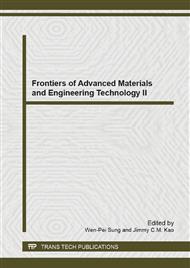p.774
p.783
p.790
p.795
p.799
p.806
p.810
p.814
p.819
TDV10 Type Vacuum Circuit Breaker Electromagnetic Operating Mechanism Design
Abstract:
TDV10 upright type vacuum circuit breaker is mainly used for electric locomotive running in the process of main circuit disconnection and connection, and also applied in the overload protection and short circuit protection.And TDV10 type operating mechanism is pneumatic, pneumatic structure because of its complex structure, cylinder work noise, air leakage risk, now a electromagnetic operating mechanism is designed to replace the pneumatic institution.TDV10 type circuit breaker through analysis the principle and performance parameters of the comparison, put forward the feasibility in theory, and gives the basic design of the electromagnetic mechanism and external circuit.Using Ansoft software design agency for static and dynamic simulation analysis of magnetic field. Through the analysis and comparison of the curve of each parameter, verify the feasibility of the design.
Info:
Periodical:
Pages:
799-805
Citation:
Online since:
April 2014
Authors:
Price:
Сopyright:
© 2014 Trans Tech Publications Ltd. All Rights Reserved
Share:
Citation:


